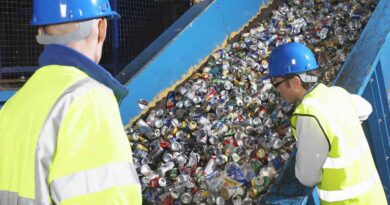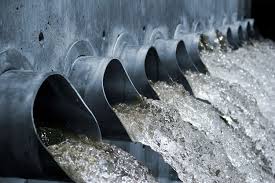Landfill Emissions and their Impact on the Environment
The simplest and typically least expensive technique of trash disposal is landfilling. Even in arid regions, the effect of landfills on water supplies must be taken into consideration.
Even though landfilling is the most popular waste disposal technique due to low prices and the abundance of marginal land. Water resources are impacted by landfilling in numerous ways.
Liquid waste is frequently disposed of at landfills in arid regions. The majority of dry regions experience severe rainfall erosion, which raises the risk of ground and surface water pollution. Economic and cultural progress have raised living standards and altered consumer behavior in the area, which has led to a pronounced rise in garbage production.
Read Also : Basic Requirements and Components of Sanitary Landfill
Furthermore, landfills impact the local environment by contaminating the soil and water.
The Environmental Protection Agency claims that waste-to-energy incinerators and landfills produce more greenhouse gas emissions and require more energy overall than practices that adhere to the maxim “reduce, reuse, recycle.”
In general, landfills are significant landscape structures made up of millions of Mg of garbage, including buried local soils, inorganic components, and both natural and manmade organic matter.
There are strict legal and oversight requirements for the disposal confinement of solid waste in highly industrialized nations with substantial landfilling activities, such as the United States.
Sanitary landfill collection and removal systems, final covers, and bottom liners make up the designed structure known as a landfill.
Landfills are built to handle and store trash. The environmental effects of the numerous landfills that are present around the world cannot be disregarded because a large portion of the potential risk from Waste disposal originates from the migration of polluted leachate and landfill gas.
Landfill Effects on the Environment
Water pollution, air pollution that may have an impact on climate, methane emissions, and potential health risks are all caused by the movement of gas and wastewater from the landfill body into the environment.
(1) Because landfills produce a toxic soup of household and industrial cleaning products, they pose long-term dangers to underground and surface water that are hydrologically connected.
(2) Nearly two thirds of landfill waste is biodegradable; as it rots and decomposes, it emits hazardous gases like CO2 and methane, both of which act as greenhouse gases and speed up the warming process. Additionally, landfills contaminate the local environment, especially the soil and water.
(3) By modifying the soil-forming elements of the climate, exposure, and soil organisms, humans can alter how soil forms in landfills.
(4) A landfill may emit offensive odors, and landfill gas may seep through the ground and gather in neighboring structures. The most dangerous landfill gases include ammonia, sulfide, methane, and carbon dioxide.
Benefits of landfilling include:
▪ Utilizing landfills is simple.
▪ Landfills can turn garbage produced in a city, municipality, or neighborhood into electricity.
▪ A landfill can keep neighborhoods, towns, and cities clean.
▪ Compared to other waste disposal methods, landfills are comparatively safer.
▪ Continued accumulation of toxic waste
The most common rewards resulting from landfill operation have been mentioned above. The moment has come to consider the benefits of limiting the amount of waste disposed of in landfills.

Landfilling has the potential to convert a problematic portion of waste flow into short-term gas generation and long-term carbon supply, particularly in the longer time frame.
Environmentalists, landfill operators, and trash suppliers are currently critical of an alternative waste removal method.
There are instances when more waste than the facility can handle is decided for recycling, reuse, or incineration. Not every kind of material can be burned or recycled.
For some of them, a landfill is the only option, and waste shouldn’t be left in residential areas if a recycling plant or an incinerator is not in use due to maintenance, repair, or breakdown. This demonstrates that even when recycling process are in place, some waste types still need to be disposed of in landfills.
Landfills ought to be built using environmentally friendly methods to avoid harming the environment in the long run.
The primary benefit of sanitary landfills is their ability to convert landfill gas into energy that can be obtained.
The primary waste products from landfills can be converted directly into fuel for burning or indirectly into another fuel.
Disadvantages of Landfills
▪ Burying waste in a landfill has the potential to release poisons into the soil and groundwater nearby.
▪ Waste fills landfills to the brim. There is some trash that ought to never be there.
▪ Leachate is produced when landfills are used.
▪ Health issues arise from landfills.
▪ Dumpsites still emit landfill gases.
Groundwater pollution from landfills has a ▪significant potential.
▪ Dumpsters are too convenient for trash.
▪ Landfills are harmful to the environment and to our health. When there is a leak, harmful waste substances from runoff from landfills enter our waste supplies. The drinking water in many towns near landfills has been tainted by waste leaks.
▪ In landfills, organic waste such as food leftovers and green garbage is typically compacted and covered. The eventual release of methane, a greenhouse gas with 25 times the global warming potential of carbon dioxide, has significant consequences for climate change.
Waste disposal can have a major negative impact on the environment. Not all garbage will eventually decompose, but some of it will, and while it does so, it may smell because methane gas, which is flammable and helps the greenhouse effect, is produced. When waste decomposes, leachate can produce pollution.
How to Reduce Solid Waste in Landfills
(1) Reducing solid waste means decreasing the amount of waste that gets to landfills. The most popular ways to reduce landfill waste are to reduce, reuse, and recycle.
(2) There are some helpful actions we can take to ensure we make fewer annual journeys to the landfill.
▪ Donating clothing
Give garments to charitable organizations that help those in need, or keep some in your garbage.
▪ minimize food waste
Food is another thing that we frequently just throw away carelessly without giving it any thought. Instead of simply tossing food out, make good use of it as a very substantial portion of what we buy each year goes uneaten. Millions of hungry people could be fed even if we donated a little portion of the food we don’t eat.
Read Also : Managing Electronic Waste to Ensure Green Computing
▪ Purchase items with less packaging;
In the freezer, we can also start stocking up. Purchase a large quantity of food at once, put it in the freezer, and then wait to purchase more until the freezer is completely empty. We should purchase food in bulk to save packaging and waste.
In Conclusion, according to the discussion above, landfills provide a fantastic solution for refuse that can be recycled or reused but is not acceptable for recycling. Municipal garbage management still mostly involves landfills.
Despite having an extremely high potential to harm the environment, landfills are nevertheless one of the most common ways to dispose of trash. In order to recognize and describe landfill environmental concerns, frequent landfill maintenance is necessary.
A landfill that safely integrates waste products into the ecosystem is one that is truly sustainable.
If this article was in anyway helpful, please help us by sharing.



